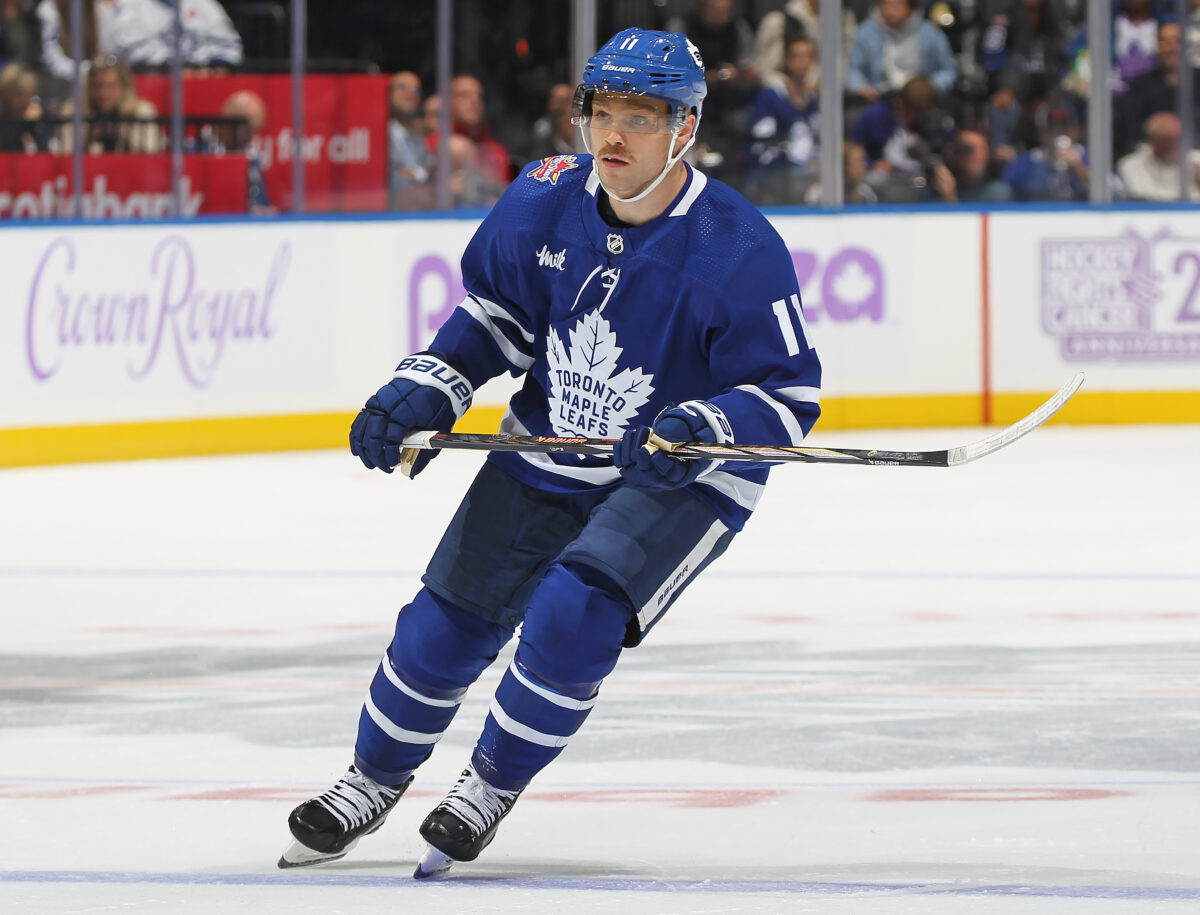A recent analysis by hockey insiders Nick Kypreos and Justin Bourne has lifted a curious trend to the conversation. The Toronto Maple Leafs perform better without their superstar captain, Auston Matthews, in the lineup. The Maple Leafs have a 38-19-2 record without Matthews all-time. His exceptional skills and leadership make him the center of the team’s offence, so the team’s improved performance in his absence raises questions about why this might happen.
Related: NHL Rumors: Maple Leafs, Canadiens, Canucks
Could it be a matter of playing style, a shift in team dynamics, or simply a statistical quirk? Here, I discuss Kypreos and Bourne’s discussion and explore possible explanations.
Kyper and Bourne Weigh in on the Leafs’ Success Without Matthews
In their discussion, Kypreos and Bourne analyzed the Maple Leafs’ unexpected 3-0 record in Matthews’ recent absence due to an upper-body injury. They pointed out that this isn’t the first time the team has shown resilience without one of its stars. Last season, they managed a strong record even when top defenceman Morgan Rielly was out. According to Bourne, the team’s ability to perform well without critical players suggests they may be adjusting and adapting their style, possibly even finding a more balanced approach that could serve them well in the long term.
Trying to Explain the Reasons for the Maple Leafs’ Positive Record
Thinking logically, why do the Maple Leafs improve their win/loss record with Matthews (or, as they note, Rielly) out of the lineup? Is there some logic to this surprisingly curious record? Matthews is one of the stars of the game. Yet, the team seems to play exceedingly well without him. What’s the deal?
Related: 3 Takeaways From the Toronto Marlies’ First 10 Games
Explanation One: Adjusting to Star Players’ Absences: A Pattern?
One point Kypreos and Bourne highlighted was the team’s tendency to overcompensate when a star player like Matthews returns. They suggested that the Maple Leafs might focus too heavily on reintegrating their star players, altering their style to disrupt the chemistry developed in their absence. For example, without Matthews, the Maple Leafs might rely less on a single scoring threat and distribute the scoring load across more players. This adjustment makes the team more cohesive and unpredictable, contributing to their success without their top center.

Explanation Two: Does Matthews’ Style Need Tweaking?
A key topic of debate was Matthews’ high-volume shooting approach, which defines his elite scoring ability. Bourne suggested that Matthews might benefit from balancing his shot selection with a more pass-oriented style, especially when playing alongside linemate Mitch Marner. Bourne compared this potential shift to how Brett Hull, known for his goal-scoring focus, adjusted to a playmaking setup when paired with Adam Oates. By setting up his teammates more, Matthews might open up additional scoring opportunities for the Leafs and add versatility to his game.
Related: Anthony Stolarz’s Persistence Pays Off for Him and the Maple Leafs
Explanation Three: Exploring the “Superstar Effect” and Role Balance
Another factor Kypreos and Bourne discussed is the “superstar effect.” When a player of Matthews’ caliber is in the lineup, teammates often defer to him, limiting their scoring chances and reducing the unpredictability of the team’s offence. Secondary players step up in his absence, taking on more significant roles and responsibilities. This increased contribution from the supporting cast could be one reason the Maple Leafs’ performance temporarily improves without Matthews. It is not necessarily that Matthews’ presence holds them back. Instead, his absence encourages other players to elevate their game and contribute more to the team’s success.

Explanation Four: Defensive Responsibility Without Matthews
Interestingly, Kypreos and Bourne observed that the Maple Leafs tend to play a more defensively responsible game without Matthews. When Matthews is in the lineup, his offensive drive and willingness to push the pace can create opportunities but might also increase turnovers or defensive lapses. Without him, the team seems to slow down and focus more on structure and defence, reducing high-danger chances for their opponents. This tactical adjustment might contribute to the Maple Leafs’ improved record in Matthews’ absence, indicating that a more balanced offensive and defensive approach could yield benefits when he is also in the lineup.
So What Implication? Should the Maple Leafs Separate Matthews and Marner?
Another potential adjustment involves Matthews and Marner’s pairing. While they are one of the league’s top duos, Bourne suggested that separating them could maximize their individual strengths. The two players have proven they can excel independently, with Marner flourishing when Matthews is sidelined and Matthews doing well when Marner is out. This separation could allow each player to drive his own line, giving the Maple Leafs additional flexibility in their line combinations and potentially making them more effective as a team.
Could Matthews’ Return Bring a New Style for the Leafs?
Kyper and Bourne’s analysis suggests that while Matthews is critical to the Maple Leafs’ success, his absence reveals an opportunity to refine the team’s playing style. If Matthews can incorporate a more balanced approach that includes passing and strategic playmaking, or if the coaching staff experiments with separating him and Marner, the Maple Leafs might become even more dynamic offensively.
Related: Why Are These 3 NHL Teams the Most Hated?
As Matthews prepares to return, it will be interesting to see if the team can leverage these insights to reach their full potential. This curious trend of thriving without Matthews offers food for thought for the Maple Leafs coaching staff and fans alike.
